
Stigmata, in Catholicism, are bodily wounds, scars and pain which appear in locations corresponding to the crucifixion wounds of Jesus Christ: the hands, wrists, feet, near the heart, the head, and back.

The Order of the Brothers of the Blessed Virgin Mary of Mount Carmel, known as the Carmelites or sometimes by synecdoche known simply as Carmel, is a Roman Catholic mendicant religious order for men and women. Historical records about its origin remain uncertain, but it was probably founded in the 12th century on Mount Carmel in the Crusader States. Berthold of Calabria, as well as Albert of Vercelli, have traditionally been associated with the founding of the order, but few clear records of early Carmelite history have survived. The order of Carmelite nuns was formalised in 1452.

John of the Cross, OCD was a Spanish Catholic priest, mystic, and Carmelite friar of converso origin. He is a major figure of the Counter-Reformation in Spain, and he is one of the thirty-seven Doctors of the Church.
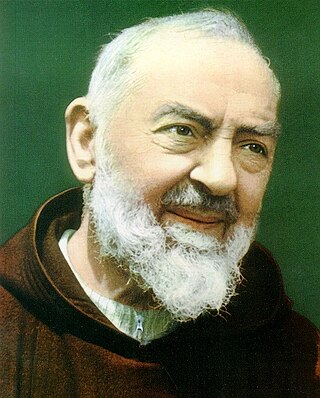
Pio of Pietrelcina, widely known as Padre Pio, was an Italian Capuchin friar, priest, stigmatist, and mystic. He is venerated as a saint in the Catholic Church, celebrated on 23 September.
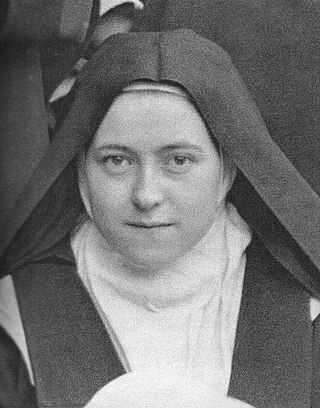
Therese of Lisieux, also known as Saint Therese of the Child Jesus and the Holy Face, was a French Discalced Carmelite who is widely venerated in modern times. She is popularly known in English as the Little Flower of Jesus, or simply the Little Flower, and in French as la petite Thérèse.

The Discalced Carmelites, known officially as the Order of the Discalced Brothers of the Blessed Virgin Mary of Mount Carmel or the Order of Discalced Carmelites, is a Catholic mendicant order with roots in the eremitic tradition of the Desert Fathers. The order was established in the 16th century, pursuant to the reform of the Carmelite Order by two Spanish saints, Teresa of Ávila (foundress) and John of the Cross (co-founder). Discalced is derived from Latin, meaning "without shoes".

The Basilica of the National Shrine of the Little Flower, also called Our Lady of Mount Carmel and St. Thérèse Church, is a historic Roman Catholic church, located in San Antonio, Texas, in the United States. The church is distinguished as one of 84 in the United States bearing the papal designation of "minor basilica." Despite its religious importance it is not the cathedral of the local diocese; that distinction belongs to San Fernando Cathedral.
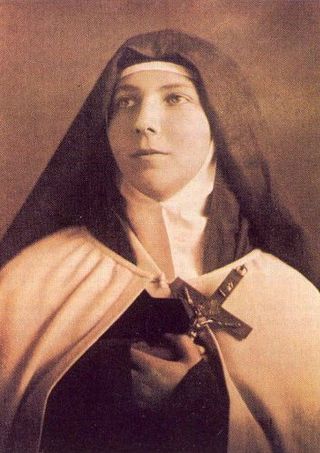
Teresa of Jesus of Los Andes, born as Juana Enriqueta Josephina de Los Sagrados Corazones Fernández Solar, was a Chilean nun of the Discalced Carmelites. Fernández Solar was a pious child but had an often unpredictable temperament for she could be prone to anger and being vain but could also demonstrate her charitable and loving nature; she seemed transformed when she decided to become a nun and her character seemed to change for her sole ambition was to dedicate herself to the service of God. But her time in the convent was cut short due to her contracting an aggressive disease that killed her - she knew she would die but was consoled knowing she would be able to make her profession before she died.

Marie of the Incarnation, OCD, also known as Madame Acarie, was the foundress of the Discalced Carmel in France and later became an extern sister of the order.
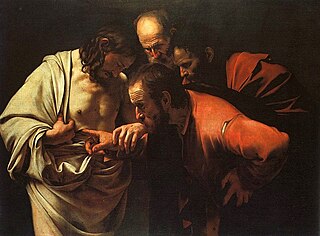
A number of people have claimed to have had visions of Jesus Christ and personal conversations with him. Some people make similar claims regarding his mother, Mary. Discussions about the authenticity of these visions have often invited controversy. The Catholic Church endorses a fraction of these claims, and various visionaries it accepts have achieved beatification, or even sainthood.
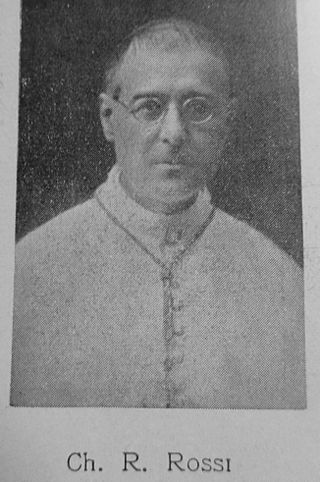
Raffaele Rossi, OCD, born Carlo Rossi,, was an Italian Discalced Carmelite and cardinal. Rossi served in the Sacred Consistorial Congregation in the Roman Curia from 1930 until his death and as a friar had the religious name "Raffaele of Saint Joseph". Pope Pius XI elevated him into the cardinalate in 1930. His cause of beatification began three decades after his death and he is known as a Servant of God.

Mariam Baouardy, was a Discalced Carmelite nun of the Melkite Greek Catholic Church. Born to Palestinian Greek Catholic parents from the town of Hurfiesh in the upper Galilee, later moved to I’billin, she was known for her service to the poor. In addition, she became a Christian mystic who suffered the stigmata, and has been canonized by the Catholic Church.
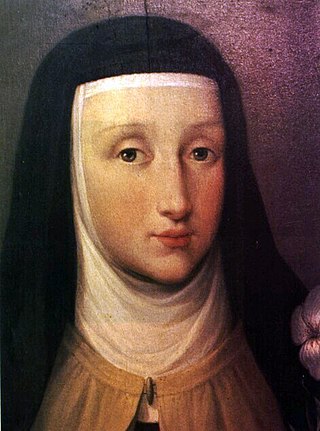
Teresa Margaret of the Sacred Heart, OCD was an Italian Discalced Carmelite nun. During her brief life of quiet service in the monastery, she came to be revered for her mystical gifts. She has been declared a saint by the Catholic Church.

Mary of Jesus de León y Delgado, was a 17th-century Spanish Dominican lay sister, a mystic and visionary, known popularly as "La Siervita" in the Canary Islands. She lived a life that was austere and simple. Many miracles were attributed to her, such as levitation, ecstasy, bilocation, stigmata, and clairvoyance and healing.

Ana de Jesús, translated into English as Anne of Jesus, was a Spanish Discalced Carmelite nun and writer. She was a close companion of Teresa of Ávila, foundress of the Carmelite reform and served to establish new monasteries of the Order throughout Europe. Known as a mystic and for her writings on prayer, she has been declared Venerable by the Catholic Church.

María de las Maravillas de Jesús, OCD, in some contexts known as Maravillas de Jesús, was a Spanish Discalced Carmelite. She founded several houses of her order and even set one up in India after serving a brief exile with other Carmelites due to the outbreak of the Spanish Civil War.

María López de Rivas Martínez, religious name María of Jesus was a Spanish Discalced Carmelite. She was beatified on 14 November 1976 and her cause for sainthood continues.

Marie-Eugene de L'Enfant-Jésus, OCD was a French Catholic priest and a Discalced Carmelite. He joined the Carmelites just after his ordination.
A myroblyte is a Christian saint from whose relics or burial place "an aromatic liquid with healing properties" or "holy water ", known as the Oil of Saints, "is said to have flowed, or still flows", or from whose body emanates a scent known as the odor of sanctity. The exudation of the oil or scent itself is referred to as myroblysia or myroblytism. In the Eastern Orthodox Church, some icons are also believed to release the oil.


















